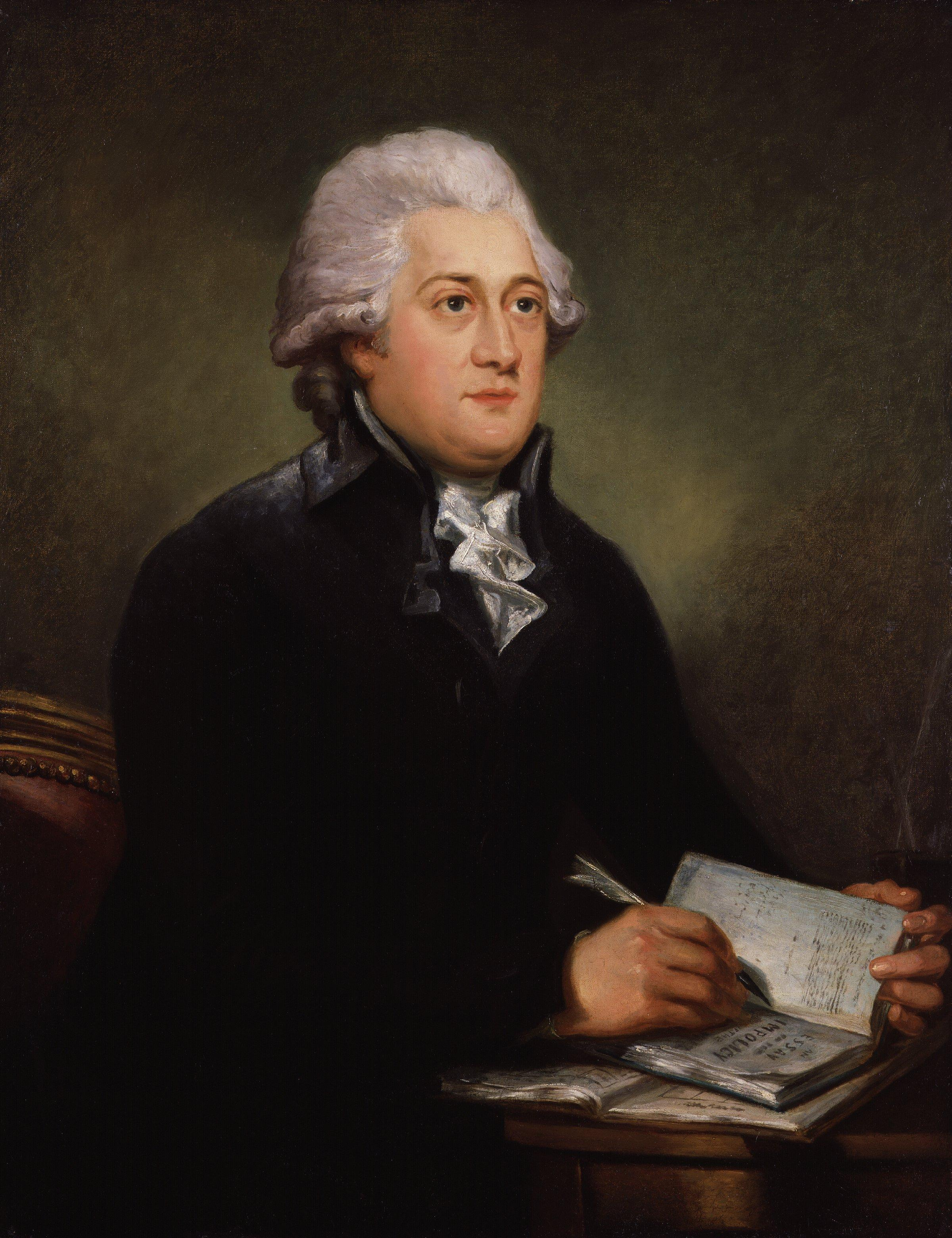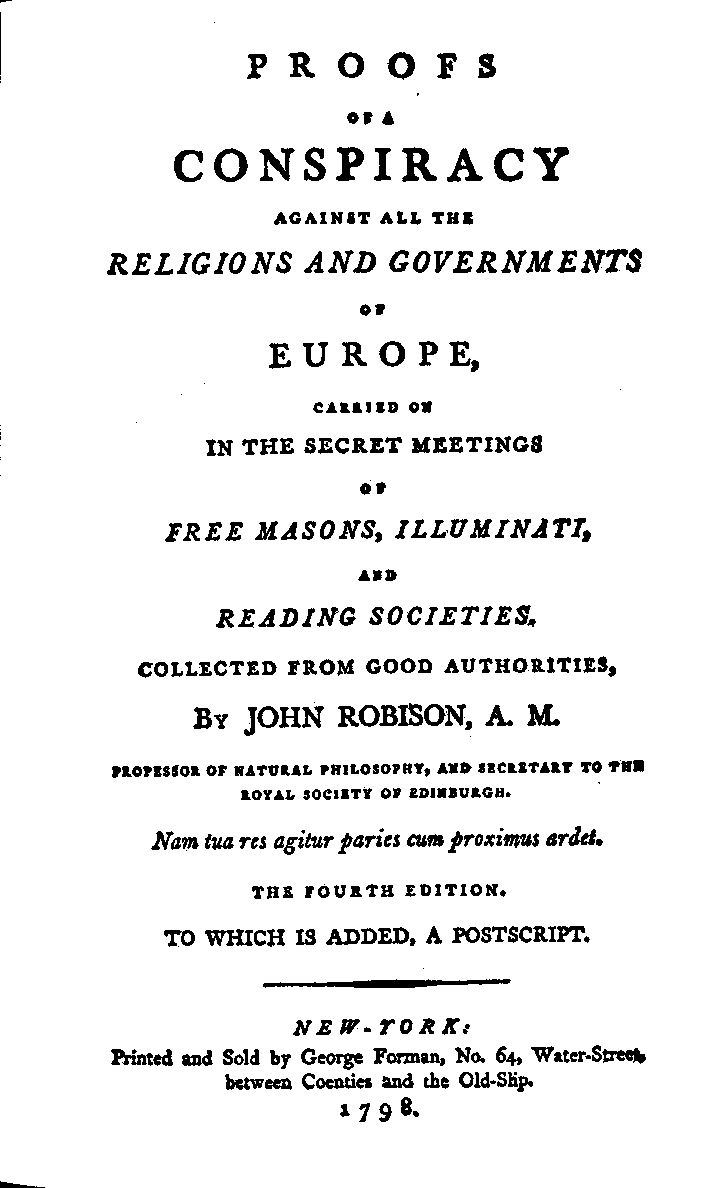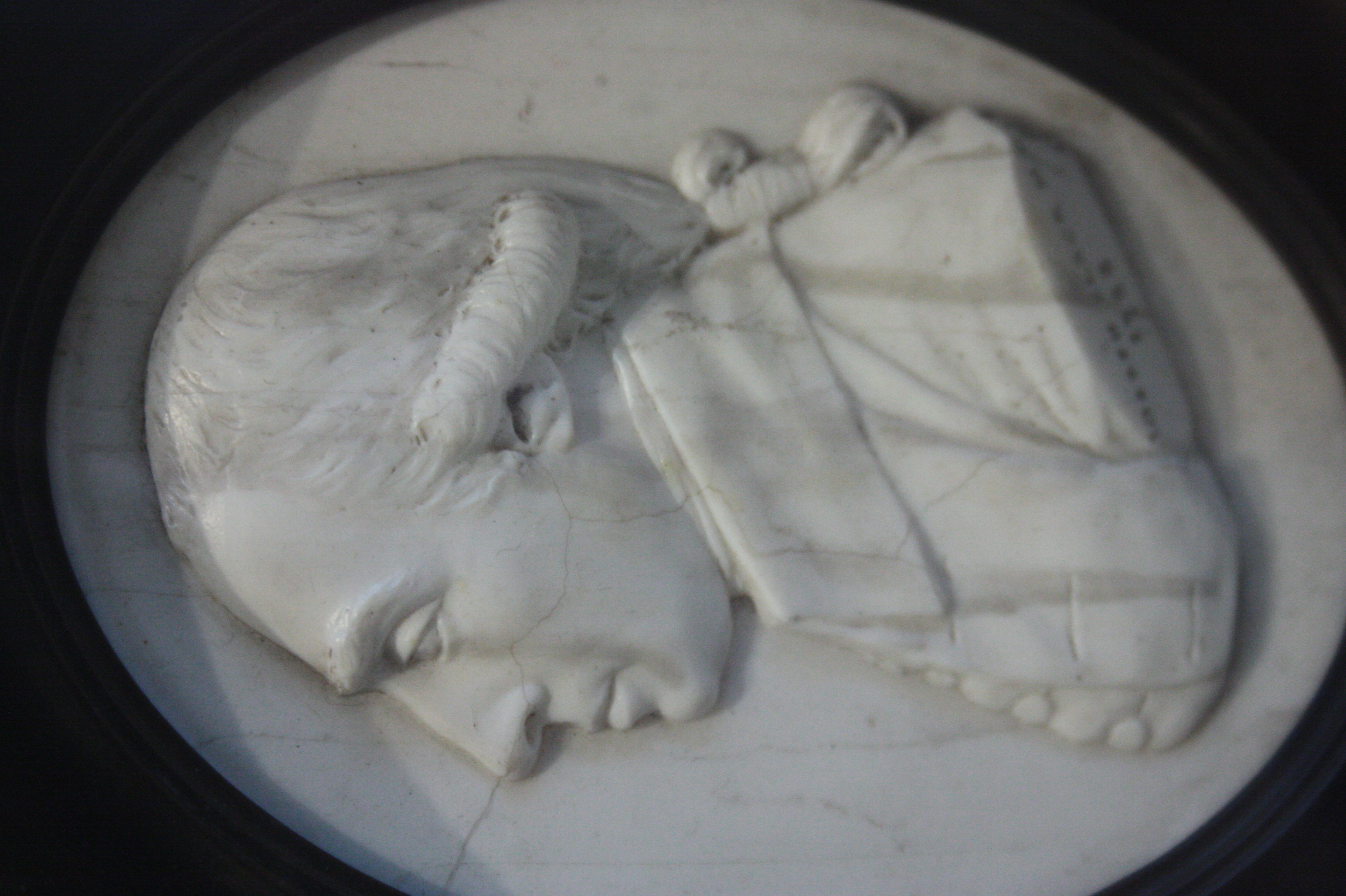|
James Watt
James Watt (; 30 January 1736 (19 January 1736 OS) – 25 August 1819) was a Scottish inventor, mechanical engineer, and chemist who improved on Thomas Newcomen's 1712 Newcomen steam engine with his Watt steam engine in 1776, which was fundamental to the changes brought by the Industrial Revolution in both his native Great Britain and the rest of the world. While working as an instrument maker at the University of Glasgow, Watt became interested in the technology of steam engines. He realised that contemporary engine designs wasted a great deal of energy by repeatedly cooling and reheating the cylinder. Watt introduced a design enhancement, the separate condenser, which avoided this waste of energy and radically improved the power, efficiency, and cost-effectiveness of steam engines. Eventually, he adapted his engine to produce rotary motion, greatly broadening its use beyond pumping water. Watt attempted to commercialise his invention, but experienced great financial ... [...More Info...] [...Related Items...] OR: [Wikipedia] [Google] [Baidu] |
Carl Frederik Von Breda
Carl Frederik von Breda (16 August 1759 – 1 December 1818) was a Swedish painter who studied in and spent much of his career in Britain before becoming painter to the Swedish court. He was born in Stockholm in 1759, and moved to Britain where he was a student of Joshua Reynolds. Breda specialized in painting portraits and was called "the van Dyck of Sweden". He returned to Sweden 1796 where he became professor at the Academy of Arts, a popular portraitist, and a court painter. Breda married at age 22 and his son, Johan Fredrik, was also a painter, who studied under his father. Breda died in Stockholm in 1818. Breda painted James Watt. Early life Breda's great-grandfather Pieter emigrated to Stockholm around the year 1670 from the Netherlands. The "von Breda" family name seems to indicate a connection with the city of Breda. ''Von'' is not a Dutch preposition, but in the Nordic countries, this originally German preposition has occasionally been used as a part of names of en ... [...More Info...] [...Related Items...] OR: [Wikipedia] [Google] [Baidu] |
Lap Engine
The Lap Engine is a beam engine designed by James Watt, built by Boulton and Watt in 1788. It is now preserved at the Science Museum, London. It is important as both an early example of a beam engine by Boulton and Watt, and also mainly as illustrating an important innovative step in their development for its ability to produce rotary motion. The engines name comes from its use in Matthew Boulton's Soho Manufactory, where it was used to drive a line of 43 polishing or lapping machines, used for the production of buttons and buckles. Innovations Watt did not invent the steam engine and there is no single 'Watt steam engine' as such. He developed a number of separate innovations, each of which improved the existing engines of the day, beginning with Newcomen's. The Lap Engine of 1788, also the Whitbread Engine (1785), represent survivors of the first engines to show all of Watt's major improvements in one. Parallel motion Rotative beam engines Sun and planet ... [...More Info...] [...Related Items...] OR: [Wikipedia] [Google] [Baidu] |
James Keir
James Keir FRS (20 September 1735 – 11 October 1820) was a Scottish chemist, geologist, industrialist, and inventor, and an important member of the Lunar Society of Birmingham. Life and work Keir was born in Stirlingshire, Scotland, in 1735 as the eighteenth child of John Keir and Magdaline Lind (aunt of James Lind). James attended the Royal High School, Edinburgh, and studied medicine at the University of Edinburgh where he met and formed a lasting friendship with Erasmus Darwin. At the age of 22, Keir joined the army and was commissioned into the 61st Regiment (now the Gloucestershire Regiment). During the seven years' war he was stationed with his regiment in the West Indies. He became lieutenant on, 31 March 1759, captain-lieutenant on 16 May 1766, and captain on 23 June of the same year. In the spring of 1768 he resigned his commission, being disappointed at not meeting with more sympathy in his studies from his brother-officers. He found, however, one congen ... [...More Info...] [...Related Items...] OR: [Wikipedia] [Google] [Baidu] |
John Roebuck
John Roebuck of Kinneil FRS FRSE (1718 – 17 July 1794) was an English inventor and industrialist who played an important role in the Industrial Revolution and who is known for developing the industrial-scale manufacture of sulphuric acid. Life and work John Roebuck was born in Sheffield, where his father, also John Roebuck, had a prosperous manufacturing business. After attending Sheffield Grammar School and Dr. Philip Doddridge's academy at Northampton, Roebuck studied medicine at Edinburgh, where he developed a taste for chemistry from the lectures of William Cullen and Joseph Black. He finally graduated M.D. at the University of Leiden in 1742. Roebuck started medical practice at Birmingham, but devoted much of his time to chemistry, especially its practical applications. Among the most important of his early achievements in this field was the introduction, in 1746, of leaden condensing chambers for the manufacture of sulphuric acid. Together with Samuel Garbett, ... [...More Info...] [...Related Items...] OR: [Wikipedia] [Google] [Baidu] |
John Robison (physicist)
John Robison FRSE (4 February 1739 – 30 January 1805) was a British physicist and mathematician. He was a professor of natural philosophy (the precursor of natural science) at the University of Edinburgh. A member of the Edinburgh Philosophical Society when it received its royal warrant, he was appointed as the first general secretary to the Royal Society of Edinburgh (1783–98). Robison invented the siren and also worked with James Watt on an early steam car. Following the French Revolution, Robison became disenchanted with elements of the Enlightenment. He authored ''Proofs of a Conspiracy'' in 1797—a polemic accusing Freemasonry of being infiltrated by Weishaupt's Order of the Illuminati. His son was the inventor Sir John Robison (1778–1843). Biography The son of John Robison, a Glasgow merchant, he was born in Boghall, Baldernock, Stirlingshire (now East Dunbartonshire) and attended Glasgow Grammar School and the University of Glasgow (MA 1756). After a bri ... [...More Info...] [...Related Items...] OR: [Wikipedia] [Google] [Baidu] |
Adam Smith
Adam Smith (baptized 1723 – 17 July 1790) was a Scottish economist and philosopher who was a pioneer in the thinking of political economy and key figure during the Scottish Enlightenment. Seen by some as "The Father of Economics"——— or "The Father of Capitalism",———— he wrote two classic works, ''The Theory of Moral Sentiments'' (1759) and '' An Inquiry into the Nature and Causes of the Wealth of Nations'' (1776). The latter, often abbreviated as ''The Wealth of Nations'', is considered his ''magnum opus'' and the first modern work that treats economics as a comprehensive system and as an academic discipline. Smith refuses to explain the distribution of wealth and power in terms of God’s will and instead appeals to natural, political, social, economic and technological factors and the interactions between them. Among other economic theories, the work introduced Smith's idea of absolute advantage. Smith studied social philosophy at the University of Glasgo ... [...More Info...] [...Related Items...] OR: [Wikipedia] [Google] [Baidu] |
Joseph Black
Joseph Black (16 April 1728 – 6 December 1799) was a Scottish physicist and chemist, known for his discoveries of magnesium, latent heat, specific heat, and carbon dioxide. He was Professor of Anatomy and Chemistry at the University of Glasgow for 10 years from 1756, and then Professor of Medicine and Chemistry at the University of Edinburgh from 1766, teaching and lecturing there for more than 30 years. The chemistry buildings at both the University of Edinburgh and the University of Glasgow are named after Black. Early life and education Black was born "on the banks of the river Garonne" in Bordeaux, France, the sixth of the 12 children of Margaret Gordon (''d''. 1747) and John Black. His mother was from an Aberdeenshire family that had connections with the wine business and his father was from Belfast, Ireland and worked as a factor in the wine trade. He was educated at home until the age of 12, after which he attended grammar school in Belfast. In 1746 at the age of 18 ... [...More Info...] [...Related Items...] OR: [Wikipedia] [Google] [Baidu] |
Thomas Newcomen
Thomas Newcomen (; February 1664 – 5 August 1729) was an English inventor who created the atmospheric engine, the first practical fuel-burning engine in 1712. He was an ironmonger by trade and a Baptist lay preacher by calling. He was born in Dartmouth, in Devon, England, to a merchant family and baptised at St. Saviour's Church on 28 February 1664. In those days flooding in coal and tin mines was a major problem. Newcomen was soon engaged in trying to improve ways to pump out the water from such mines. His ironmonger's business specialised in designing, manufacturing and selling tools for the mining industry. Religious life Thomas Newcomen was a lay preacher and a teaching elder in the local Baptist church. After 1710 he became the pastor of a local group of Baptists. His father had been one of a group who brought the well-known Puritan John Flavel to Dartmouth. Later one of Newcomen's business contacts in London, Edward Wallin, was another Baptist minister who ... [...More Info...] [...Related Items...] OR: [Wikipedia] [Google] [Baidu] |
Sun And Planet Gear
The sun and planet gear is a method of converting reciprocating motion to rotary motion and was used in the first rotative beam engines. It was invented by the Scottish engineer William Murdoch, an employee of Boulton and Watt, but was patented by James Watt in October 1781. It was invented to bypass the patent on the crank, already held by James Pickard. It played an important part in the development of devices for rotation in the Industrial Revolution. Operation The sun and planet gear converted the vertical motion of a beam, driven by a steam engine, into circular motion using a 'planet', a cogwheel fixed at the end of the connecting rod (connected to the beam) of the engine. With the motion of the beam, this revolved around, and turned, the 'sun', a second rotating cog fixed to the drive shaft, thus generating rotary motion. An interesting feature of this arrangement, when compared to that of a simple crank, is that when both sun and planet have the same number of te ... [...More Info...] [...Related Items...] OR: [Wikipedia] [Google] [Baidu] |
Steam Hammer
A steam hammer, also called a drop hammer, is an industrial power hammer driven by steam that is used for tasks such as shaping forgings and driving piles. Typically the hammer is attached to a piston that slides within a fixed cylinder, but in some designs the hammer is attached to a cylinder that slides along a fixed piston. The concept of the steam hammer was described by James Watt in 1784, but it was not until 1840 that the first working steam hammer was built to meet the needs of forging increasingly large iron or steel components. In 1843 there was an acrimonious dispute between François Bourdon of France and James Nasmyth of Britain over who had invented the machine. Bourdon had built the first working machine, but Nasmyth claimed it was built from a copy of his design. Steam hammers proved to be invaluable in many industrial processes. Technical improvements gave greater control over the force delivered, greater longevity, greater efficiency and greater power. A ste ... [...More Info...] [...Related Items...] OR: [Wikipedia] [Google] [Baidu] |
Steamship
A steamship, often referred to as a steamer, is a type of steam-powered vessel, typically ocean-faring and seaworthy, that is propelled by one or more steam engines that typically move (turn) propellers or paddlewheels. The first steamships came into practical usage during the early 1800s; however, there were exceptions that came before. Steamships usually use the prefix designations of "PS" for ''paddle steamer'' or "SS" for ''screw steamer'' (using a propeller or screw). As paddle steamers became less common, "SS" is assumed by many to stand for "steamship". Ships powered by internal combustion engines use a prefix such as "MV" for ''motor vessel'', so it is not correct to use "SS" for most modern vessels. As steamships were less dependent on wind patterns, new trade routes opened up. The steamship has been described as a "major driver of the first wave of trade globalization (1870–1913)" and contributor to "an increase in international trade that was unprecedented in ... [...More Info...] [...Related Items...] OR: [Wikipedia] [Google] [Baidu] |
Resolution (beam Engine)
''Resolution'' was an early beam engine, installed between 1781–1782 at Coalbrookdale as a water-returning engine to power the blast furnaces and ironworks there. It was one of the last water-returning engines to be constructed, before the rotative beam engine made this type of engine obsolete. Water power in Coalbrookdale Coalbrookdale was a cradle of the First Industrial Revolution and was the scene of Abraham Darby's first production of iron by a coke-fired blast furnace, rather than the previous and expensive charcoal. Coalbrookdale is a narrow steep-sided valley that offered useful water power to drive the furnace blast and the various stamp mills, boring engines, etc. Contemporary visitors commented upon the picturesque 'fine cascades' of water. Although the water power available at Coalbrookdale had been described as 'abundant', it was also seasonal: in the summer months, the lack of water could require the furnace to be 'blown out' for some months and work susp ... [...More Info...] [...Related Items...] OR: [Wikipedia] [Google] [Baidu] |


.jpg)




.jpg)


